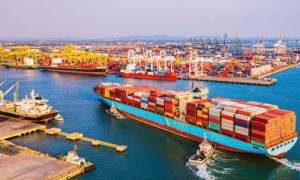Andrew Carter, Trade Commissioner for education in China, Hong Kong and Taiwan shares insights, opportunities, and engagement strategies for mainland China, which will play a key role in the recovery of the international education sector from the global pandemic.
Hi, my name is Andrew Carter, and I’m Austrade’s Trade Commissioner for Education in Mainland China, Hong Kong and Taiwan.
I’m excited to speak to you today and share some insights on the vast and dynamic Mainland China market, which will play a key role in the recovery of the international education sector from the global pandemic.
I’m going to frame my remarks around three key themes: fundamentals, opportunities and challenges, and engaging the market.
Fundamentals
China is Australia’s top international education market and it accounts for around 30 per cent of Australia’s international students.
That’s a reflection of some fundamental drivers that have shaped demand over the past decade; the size of China’s youth population, the affluence and growth of China’s middle-class and an undersupply of high-quality, accessible university places.
China’s rise and importance to the international education sector in Australia — and globally — is a well-known story. China’s Ministry of Education reported over 700,000 Chinese students went abroad for education in 2019 and Australia is one of the most popular destinations. In our pre-COVID peak year of 2019, Australia had the second highest number of Chinese students enrolled in higher education, behind only the United States.
We have seen an impact in enrolments from China since the pandemic first hit, a decline of around 24 per cent between 2019 to 2021, however that varies by sector. At the university level, overall numbers were relatively resilient thanks to online study support and other innovative responses.
We are delighted to see our Chinese students returning to Australian campuses, communities and classrooms. Arrival numbers are growing, but it will take a while. Around 60 per cent of Chinese student visa holders are still offshore and flight capacity issues have been a constraint.
It’s also important to observe that the Chinese market is evolving and maturing. Outbound student growth was already slowing before the pandemic hit.
We expect China will continue to be a dominant market in international education. But we face ever-harder competition for Chinese students.
Opportunities and challenges
Australia has lost some market share over the last two years. However, we retain a positive brand for education in China and we are recognised here for the quality of our institutions.
Due to the scale of demand, China will likely remain a mainstay for the university sector. A highly competitive labour market will support growth in demand for postgraduate study. In fact the number of students sitting China’s domestic postgraduate admission exam is far outpacing admission rates.
We see a growing opportunity in vocational education and skills training as well. By 2025 there will be a shortage of nearly 30 million workers in the manufacturing sector, China’s Ministry of Education estimates.
Education policies in China can change quickly. Recent reforms have had a sharp impact on China’s edtech sector for example and other changes impacting the international school’s sector could reduce a popular pathway for university study abroad, but potentially lead to increased demand for study abroad at year 11 and 12 level.
We are cognisant of challenges in the bilateral relationship. In the education sector there is a focus on diversification to mitigate risk and Austrade is helping providers grow new markets right across the world.
But at the same time, China is such a large and important market that it will remain a central focus for Austrade and for many education providers.
Engaging the market
The Australian international education sector has an opportunity to renew and revitalise its engagement with China.
Key suggestions for providers:
- Employability after graduation is one of the most important considerations for investing in a foreign qualification. Demand for internships and job ready skills is only increasing and can be a key differentiator for institutions beyond rankings. Over 80 per cent of Chinese students return to China after their studies, so building links with Chinese employers for internships and placements can be a smart way to give graduates an edge, and it can be leveraged in marketing and branding.
- Keep focusing on the holistic experience for students. For students coming to Australia, it’s not just about the academic side — it’s about personal growth. The opportunity to integrate and be a part of the Australian community is really attractive, so increased support there can help enhance the experience.
- Build and nurture your alumni network, which can be such a useful asset. Positive word of mouth can be very influential.
- Looking beyond China’s megacities to its second and third tier cities can mean less competition for recruitment. There are over 130 cities in China with a population above one million, home to rising numbers of middle-class families seeking high-quality education options for their children.
Austrade has a range of digital tools for education providers, such as the Market Information Package and the Where to Compete tool on our website, all bringing together insights and data to help you succeed.




















